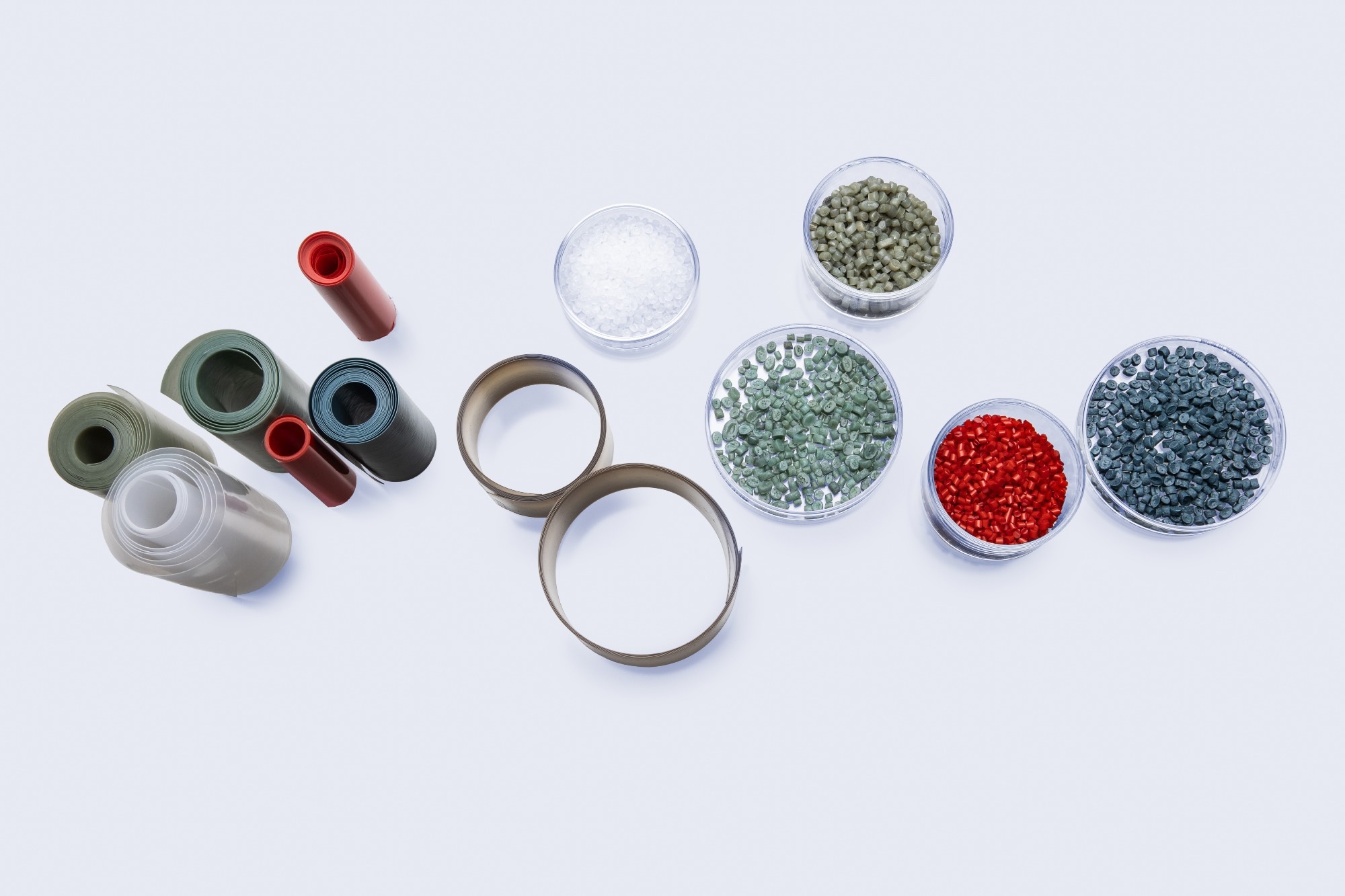In this interview, AZoMaterials speaks with Sunny Sidhartha, Global Market Developer at Anton Paar, and Dr. Thomas J. Wallin, Assistant Professor at MIT, about the power of Rheo+Raman technology for gaining deeper insights into polymer properties, from research and development through to industrial quality control.
This interview summarises the recent webinar presented by Sunny Sidhartha and Dr. Thomas J. Wallin - you can watch the webinar here.
Can you please introduce yourselves and your roles?
Sunny Sidhartha: I’m Sunny Sidhartha, Global Market Developer for Raman Spectroscopy at Anton Paar, with focus on our benchtop Raman analyzer, the Cora 5001. My role involves supporting global market development and helping customers across industries and research groups integrate Raman technology into their workflows.
Dr. TJ Wallin: I’m T.J. Wallin, an Assistant Professor in the Department of Material Science and Engineering at MIT. My research focuses on creating multifunctional soft machines by developing multi-stage photochemistries and advanced manufacturing approaches. Before MIT, I worked at Meta (formerly Oculus Research) on haptic technologies and EMG devices.
What makes Rheo+Raman technology unique, and how does it combine the best of both techniques?
Sunny Sidhartha: Rheo+Raman bridges rheology and Raman spectroscopy to provide simultaneous macroscopic and microscopic insights into polymer materials. Rheology tells you how a material behaves under stress, while Raman spectroscopy explains why it behaves that way by probing the underlying molecular structure.
The beauty of this combination lies in the fact that both measurements are synchronized, giving a real-time, correlated picture of chemical and physical changes in a single measurment run. The end result is better understanding and control of the final polymer properties.
Why is Raman spectroscopy especially valuable in polymer research and industry settings?
Sunny Sidhartha: Raman spectroscopy is a non-contact, non-destructive technique that also works in aqueous environments, making it ideal for analyzing polymers including hydrogels, adhesives, resins, etc. It can identify unknown materials, quantify blends, and monitor reactions in real time. Especially when paired with rheology, it provides an in situ chemical “lens” into structural changes, enabling both researchers and QC teams to understand their materials at a much deeper level.

How has Rheo+Raman impacted your work at MIT?
Dr. TJ Wallin: It’s been a game-changer. We work on complex, multi-stage chemistries for soft machines, and the Rheo+Raman system enables us to correlate mechanical behavior with molecular changes in real-time. Instead of running multiple separate experiments, which do not always agree with each other, we can now use a single setup to gather rheological, thermal, and chemical data simultaneously, all from about 2 mL of resin. This drastically accelerates our material discovery and optimization processes while also saving precious sample material.
Can you explain how Rheo+Raman helps uncover hidden chemical activity during reactions, such as curing?
Sunny Sidhartha: Absolutely. To give you a simple example, we set up a Rheo+Raman system to monitor an epoxy resin curing reaction. The rheometer indicated solidification/curing completion after 800 seconds. But when we looked at the corresponding Raman data, we saw that the reaction continues up to 2,100 seconds. Although the material appears to be physically cured, chemical changes are still ongoing. This deeper visibility can prevent premature assumptions, improve material modeling as well as quality control.
Watch the Webinars Now
How does your lab leverage multi-stage photochemistry, and how does Rheo-Raman support that?
Dr. TJ Wallin: We develop resins that can undergo orthogonal reactions - meaning different but independent reactions in the same system triggered by stimuli like heat or light. For instance, we can control stiffness, stretchability, or even ionic conductivity in a single print job. Rheo-Raman enables us to track the real-time chemistry behind these transformations, allowing us to fine-tune processing conditions and achieve precise material properties.
What flexibility does the Anton Paar Raman system offer for broader applications?
Sunny Sidhartha: The Cora 5001 Raman system is highly versatile. It comes with interchangeable probes for high-temperature environments, in situ extruder measurements, or immersion. You can use it standalone or in combination with a rheometer. That modularity allows users across various industries, from research to production, to adapt the system to their exact needs.

How does the Rheo+Raman system help in understanding gelation and conversion during 3D printing?
Dr. TJ Wallin: Great question. We use it to pinpoint the gel point during photopolymerization. For instance, in one test, we found that gelation occurred at 27 seconds when approximately 35% of the material had reacted. Raman helped us track functional group conversion, while rheology showed the physical transition from liquid to solid. That synergy gives us precise control over 3D print behavior.
What excites you most about the future potential of Rheo+Raman?
Dr. TJ Wallin: The ability to rapidly and comprehensively evaluate new resins with minimal material waste is incredibly powerful. As we explore multifunctional materials, particularly in areas such as wearables or biomedical devices, having a detailed and correlated understanding of both chemical and mechanical behavior will be essential. Rheo+Raman is helping us map out unexplored chemical space faster than ever.
About the Speakers
 Sunny Sidhartha is the Global Market Developer for Raman Spectroscopy at Anton Paar, where he leads market strategy and product development initiatives for the Cora series of compact Raman analyzers. With over 15 years of experience in spectroscopy, NIR technologies, oil and gas, and manufacturing, Sunny specializes in helping industries integrate molecular spectroscopy into their R&D and quality workflows. He is a regular speaker on spectroscopic innovation in polymer analysis and material science.
Sunny Sidhartha is the Global Market Developer for Raman Spectroscopy at Anton Paar, where he leads market strategy and product development initiatives for the Cora series of compact Raman analyzers. With over 15 years of experience in spectroscopy, NIR technologies, oil and gas, and manufacturing, Sunny specializes in helping industries integrate molecular spectroscopy into their R&D and quality workflows. He is a regular speaker on spectroscopic innovation in polymer analysis and material science.
Dr. Thomas J. Wallin is an Assistant Professor in the Department of Materials Science and Engineering at MIT. He received his BS in Physics and Chemistry from the College of William & Mary and completed his MS and PhD in Materials Science and Engineering at Cornell University. His research explores the design of multifunctional soft machines through novel manufacturing and multi-stage photochemistry. Prior to joining MIT, he worked at Meta’s Reality Labs, where he contributed to the development of advanced haptic and wearable technologies. Dr. Wallin’s work sits at the intersection of chemistry, robotics, and materials science, and he is a recognized leader in next-generation additive manufacturing for soft materials.

This information has been sourced, reviewed, and adapted from materials provided by Anton Paar GmbH.
For more information on this source, please visit Anton Paar GmbH.
Disclaimer: The views expressed here are those of the interviewee and do not necessarily represent the views of AZoM.com Limited (T/A) AZoNetwork, the owner and operator of this website. This disclaimer forms part of the Terms and Conditions of use of this website.